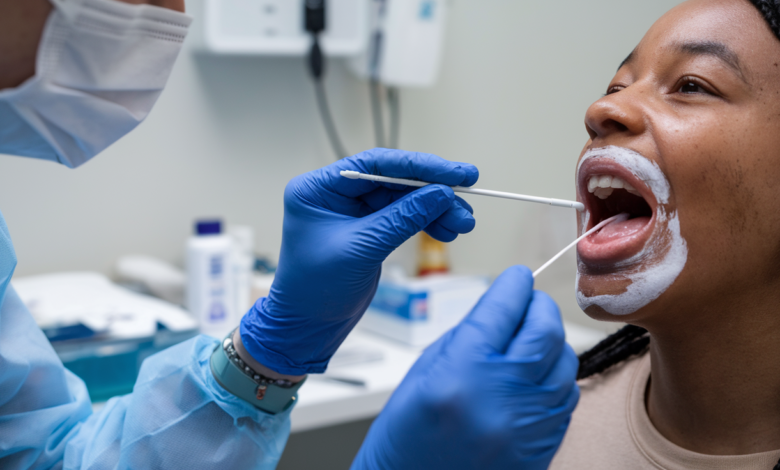How to Improve Oral Health: The Ultimate Guide to a Healthy Smile

Good oral health is essential not only for maintaining a bright, beautiful smile but also for overall well-being. Poor oral hygiene can lead to several issues such as cavities, gum disease, and even more severe health conditions like heart disease and diabetes. Understanding how to improve oral health through proper care, diet, and lifestyle changes is critical for maintaining healthy teeth and gums.
In this comprehensive guide, we will explore effective strategies to enhance your oral health, from brushing techniques to the role of nutrition in dental care. By implementing these practices, you can enjoy strong teeth, fresh breath, and a smile that lasts a lifetime.
1. Brushing Your Teeth Correctly: The First Step to Good Oral Health
Brushing your teeth is the foundation of oral hygiene, yet many people don’t do it as effectively as they should. To get the most out of brushing, it’s essential to follow proper techniques and use the right tools.
Choosing the Right Toothbrush
- Use a soft-bristled toothbrush to prevent damaging the gums and enamel.
- A toothbrush with a small head is better for reaching all areas of the mouth, especially the back molars.
- Consider switching to an electric toothbrush, which has been shown to reduce plaque and gum disease more effectively than manual brushing.
Brushing Technique
- Hold the toothbrush at a 45-degree angle to your gums.
- Use gentle circular motions instead of harsh scrubbing, which can erode enamel and irritate gums.
- Brush for at least two minutes, covering all surfaces of your teeth: front, back, and chewing surfaces.
- Don’t forget to brush your tongue to remove bacteria and prevent bad breath.
How Often to Brush
- Brush twice a day, ideally once in the morning and once before bed.
- After meals, wait about 30 minutes before brushing, especially if you’ve consumed acidic foods or beverages, as this can soften the enamel.
2. Flossing Daily: Reaching Areas Your Toothbrush Can’t
While brushing is critical, flossing is just as important for maintaining oral health. Flossing removes food particles and plaque between teeth that your toothbrush cannot reach, helping to prevent cavities and gum disease.
How to Floss Properly
- Use about 18 inches of dental floss, winding most of it around each middle finger and leaving about 1-2 inches of floss to work with.
- Gently slide the floss between your teeth, forming a C-shape around each tooth.
- Move the floss up and down, making sure to go below the gumline.
- Use a fresh section of floss for each tooth.
Alternatives to Traditional Floss
- If you find regular floss difficult to use, try floss picks or water flossers (oral irrigators). These can be easier and more convenient for some people, while still being effective at removing plaque.
3. Using Mouthwash: An Extra Layer of Protection
Mouthwash can provide an additional layer of protection by killing harmful bacteria and freshening your breath. There are different types of mouthwash designed for various oral health concerns, such as:
- Antibacterial mouthwash: Helps prevent gingivitis by reducing plaque and bacteria.
- Fluoride mouthwash: Strengthens enamel and protects against tooth decay.
- Alcohol-free mouthwash: A gentler option that reduces irritation for sensitive mouths.
Swish mouthwash around for about 30 seconds after brushing and flossing to help reduce bacteria and maintain a cleaner mouth.
4. The Importance of Regular Dental Checkups
Regular visits to your dentist are essential for maintaining optimal oral health. Your dentist can identify problems before they become severe, such as cavities, gum disease, and even oral cancer.
How Often to See a Dentist
- Most people should visit the dentist every six months for routine checkups and cleanings.
- If you have a history of dental issues or are at high risk for gum disease, your dentist may recommend more frequent visits.
Professional Cleanings
Even with the best at-home care, professional dental cleanings are necessary to remove hardened plaque (tartar) that cannot be removed by brushing or flossing. This helps prevent gum disease and maintains healthy teeth.
5. Nutrition for Oral Health: What to Eat and What to Avoid
Your diet plays a significant role in the health of your teeth and gums. Eating a balanced diet that’s rich in vitamins and minerals can strengthen your teeth, reduce plaque buildup, and prevent tooth decay.
Foods to Support Oral Health
- Calcium-rich foods: Dairy products like milk, cheese, and yogurt help strengthen teeth and bones.
- Vitamin D: Helps the body absorb calcium, found in fatty fish like salmon and fortified foods.
- Fiber-rich fruits and vegetables: Apples, carrots, and celery can naturally clean teeth and stimulate saliva production, which helps protect against cavities.
- Water: Drinking water throughout the day helps rinse away food particles and bacteria while promoting saliva production.
Foods and Drinks to Avoid
- Sugary snacks and drinks: Candies, sodas, and sugary juices are primary contributors to tooth decay. The sugar feeds harmful bacteria in the mouth, which produce acid that erodes enamel.
- Acidic foods and drinks: Beverages like citrus juices, soda, and wine can weaken tooth enamel over time. If you consume them, rinse your mouth with water afterward and wait before brushing.
- Sticky foods: Dried fruits and sticky candies cling to your teeth, increasing the risk of cavities.
6. Preventing Gum Disease: How to Protect Your Gums
Gum disease, or periodontal disease, is a common issue that can lead to tooth loss if not addressed. The best way to prevent gum disease is to practice good oral hygiene and make regular dental visits.
Warning Signs of Gum Disease
- Red, swollen, or bleeding gums during brushing or flossing.
- Persistent bad breath.
- Receding gums or teeth that appear longer than normal.
Preventing Gum Disease
- Brush and floss daily to remove plaque buildup.
- Use an antibacterial mouthwash to kill harmful bacteria.
- See your dentist regularly for professional cleanings.
- If you smoke, consider quitting, as smoking is a significant risk factor for gum disease.
7. Avoiding Harmful Habits for Better Oral Health
Certain habits can severely impact your oral health. Being mindful of these habits and avoiding them can protect your teeth and gums in the long run.
Habits to Avoid
- Smoking or chewing tobacco: These habits increase your risk for gum disease, tooth decay, and oral cancer.
- Chewing on hard objects: Avoid chewing on ice, hard candy, or even pens, as this can lead to chipped teeth and other dental injuries.
- Using your teeth as tools: Never use your teeth to open bottles, tear packaging, or other tasks they weren’t meant for.
8. The Role of Fluoride in Strengthening Teeth
Fluoride is a naturally occurring mineral that helps strengthen tooth enamel and prevent cavities. Most toothpaste contains fluoride, but additional fluoride treatments may be recommended, especially for individuals prone to cavities.
Benefits of Fluoride
- Helps remineralize enamel, making teeth more resistant to decay.
- Reduces the ability of bacteria to produce acid.
- Slows down or even reverses early signs of tooth decay.
Conclusion: A Lifetime of Healthy Teeth
Improving and maintaining good oral health is a lifelong commitment that involves proper hygiene practices, regular dental visits, a nutritious diet, and avoiding harmful habits. By incorporating these strategies into your daily routine, you can enjoy a lifetime of strong teeth, healthy gums, and a beautiful smile.


